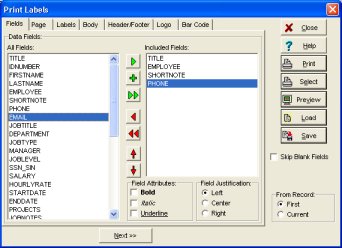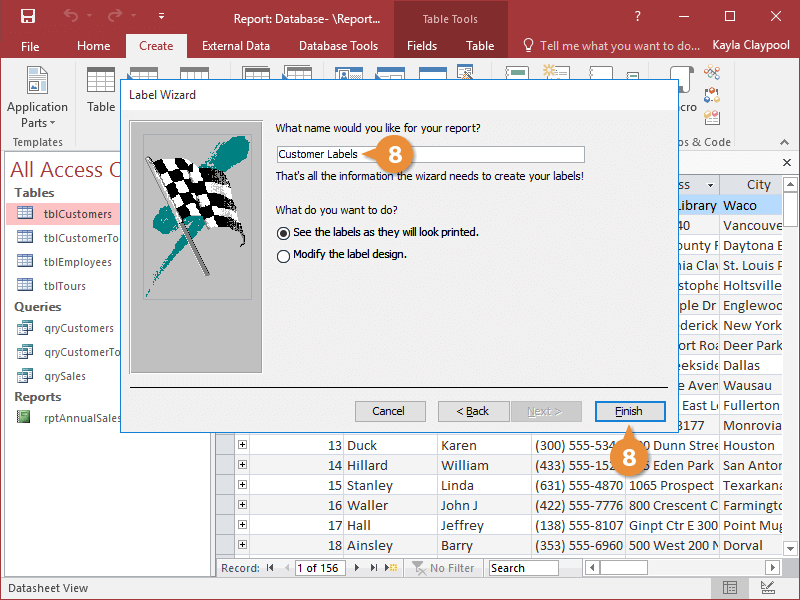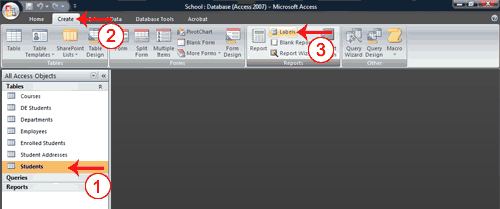

But actually, when I insert it, the customer title moves along. It looks like I’m dropping on top of the customer title. I could take my number in my customer’s lives. For example, I wanted a column earlier in this process. Go into the next blank one, and there’s a little drop-down arrow. So customer title first name start date shows the caption rather than the field name. Notice the columns that we added a caption to show that label here at the top. Now see customer Live title surname town region etc. When I go to View, that I will see them in. So, the order these columns are in here in design is the order. But actually, when I insert it, and the customer title moves along. For Example, Drag that down-drop it here.

For Example, I wanted a column earlier in this process. What are queries in MS Access? Go into the next blank one, and there’s a little drop-down arrow. Both of those columns will appear so, there are three methods the double click, and it will just jump to the next available column, click and drag to the way you want it. I could perhaps choose the postcode and date started so that I can select both of those using control-click, then I can drag across to the next blank column and let go. So, I could perhaps choose a region from within there. And in the little drop list, it will show me all the fields. If I want another column, I can go to the next available blank column. If I don’t like the town, I could go to town and double-click on it and it will jump into the next available black column. Because of the surname, if I want to see further columns, I can add that in two ways. When we did the wizard, we chose customer id, customer title, and customer-first name. We have separate columns for each of the fields that I would like to see in my query. Here it separates the upper and the lower half so, I can just move that up and down and then in the lower half. If you can’t see all the fields, you will have to scroll up and down this big horizontal bar. I’m just going to resize it, if possible.Īnd that’s just a personal preference, so I can see all the fields without scroll up and down sometimes with big tables. I don’t need the property sheet in a query. Go to the Home ribbon, choose the little set square, and this is now the design of a query. Opening them in datasheet view and will show the answer to see this in design view. Now that’s in datasheet view, and you could spend your life creating all your queries with the wizard. However, you definitely don’t have as many columns because you just see the columns you have added to the query. It looks like the table in datasheet mode. So, the result of a query is a datasheet. I can see query first query, and it’s in its own little section, so I’ve got queries one thereof tables one there of this is my query. Firstly, the query is saved and now appears in my navigation list over here on the left. Let’s say we’ve opened the query finish, and two things happen. To view the information or two to modify the query design. So, query the first query, so query the first query, and then I have two choices one to open the query. Usually, it’s a query because there are only three letters and then staying with my little convention of no spaces. Well, a little bit like the tables being prefixed with TBL, I would suggest some kind of prefix naming convention.

So, I’m only going to see the id title, first name, and surname next to which title you want for your query.

So, on the left-hand side, there are the column fields, and from your table’s right-hand side there are the fields or columns that you’ve then made available to the query. There is a double-headed arrow here for throwing all the fields into the right-hand side. So, I need to choose that table and then the fields that I would like to see in my query. There’s a little dropdown even though we’ve only got one table, there’s still a dropdown. If you’ve got duplicate entries of any kind of cross tab, it is a little bit like a Pivot Table in Excel. Coming back to our topic, the first step is then to pick the table that your query is based on. Now, the duplicates and the unmatched are actually quite useful little queries that you can use if you ever need to find any unlinked records. We have a choice of four types of query Simple Query, cross tab query, defined duplicates query, and defined unmatched query. What Are the Uses of Microsoft Access Queries?


 0 kommentar(er)
0 kommentar(er)
